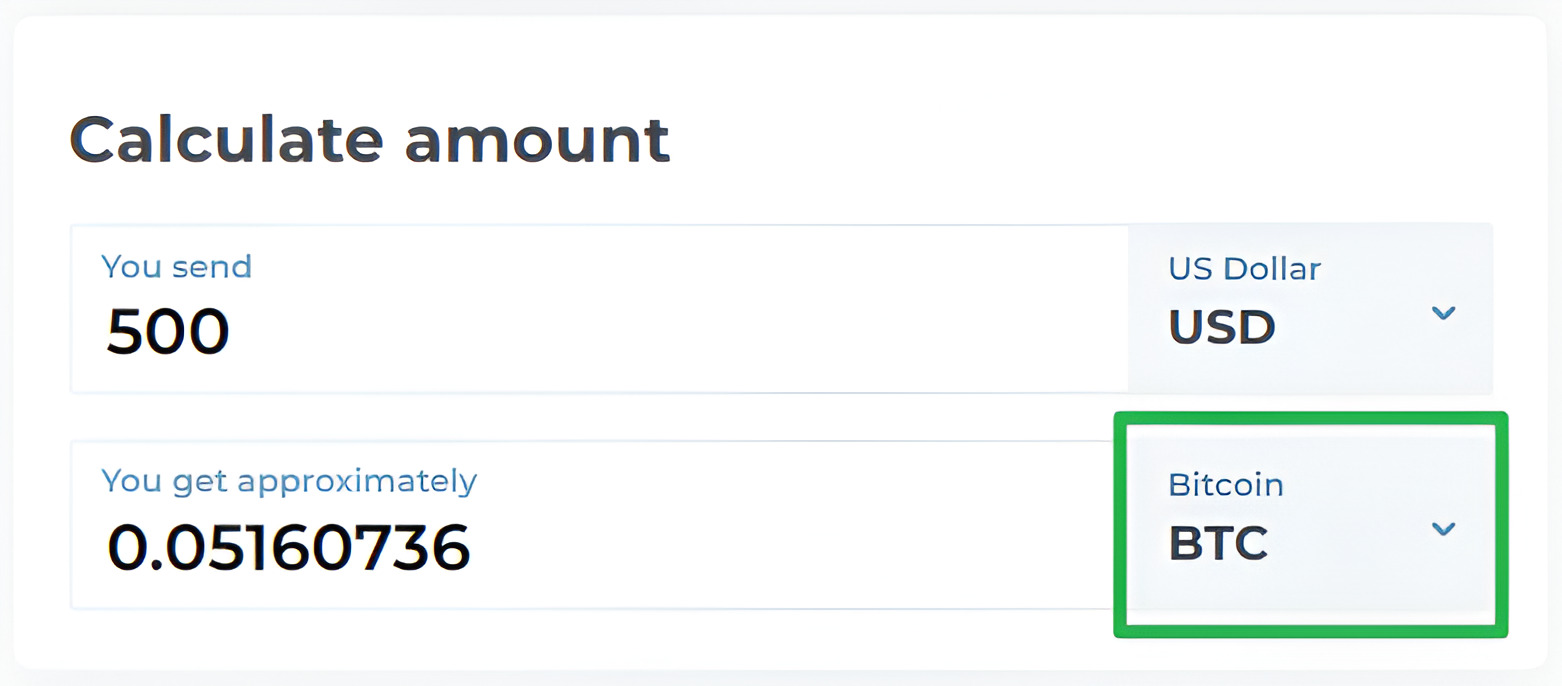Introduction
Welcome to the world of Bitcoin, a digital currency that has been making waves in the financial industry. The rise of Bitcoin has given birth to a new era of decentralized currency that operates outside the control of traditional banking institutions. But with this new form of money comes questions about its value and worth.
In this article, we will delve into the factors that influence the value of Bitcoin and explore how to calculate the worth of one Bitcoin. We will also discuss the volatility of Bitcoin’s price and highlight some real-world use cases of this cryptocurrency.
Bitcoin was created in 2009 by an anonymous person or group of people using the pseudonym Satoshi Nakamoto. It was introduced as an open-source software project, disrupting the traditional monetary system by offering an alternative decentralized currency.
One of the key features of Bitcoin is its limited supply. There will only ever be 21 million Bitcoins in existence, making it a deflationary currency. This scarcity has led to a perceived value, as more people are drawn to acquiring this digital asset.
While Bitcoin initially gained traction as a means of online transactions, it has now developed into a store of value and a speculative investment. People buy Bitcoin with the expectation that its value will appreciate over time, enabling them to sell it for a profit.
The value of Bitcoin is not tied to any government or central authority, but rather determined by the market forces of supply and demand. This decentralized nature of Bitcoin, along with its potential to serve as a hedge against inflation and the ability to facilitate borderless transactions, has contributed to its rising popularity.
However, it’s important to note that Bitcoin is still a relatively new asset class and its value can be subject to significant fluctuation. Understanding the factors that influence its value and how to assess its worth is essential for anyone considering investing in Bitcoin or using it for transactions.
So, let’s dive deeper into the world of Bitcoin and explore the factors that determine its value, as well as the methods used to calculate the worth of one Bitcoin.
A Brief History of Bitcoin
To understand the value of Bitcoin, it is important to have a brief overview of its history. Bitcoin was introduced to the world in a whitepaper published by Satoshi Nakamoto in 2008, which outlined the concept of a peer-to-peer electronic cash system. The following year, the first block of the Bitcoin blockchain, known as the Genesis Block, was mined on January 3, 2009.
In the early days, Bitcoin had little to no monetary value and was often used for experimental purposes by a small group of enthusiasts. However, as awareness and adoption grew, the value of Bitcoin began to rise. In 2010, the first known real-world transaction involving Bitcoin took place when a user bought two pizzas for 10,000 Bitcoins. This transaction highlighted the potential of Bitcoin as a medium of exchange.
From 2010 to 2017, Bitcoin’s value experienced significant fluctuations, with both upward and downward movements. However, it wasn’t until 2017 that Bitcoin gained global attention when its price skyrocketed to nearly $20,000 per Bitcoin. This period, often referred to as the “crypto boom,” saw a surge in interest and investment in cryptocurrencies, with Bitcoin leading the way.
Following the boom, Bitcoin experienced a period of consolidation and correction, with its price dropping significantly in 2018. Nonetheless, it has since regained momentum and continues to be one of the most well-known and widely traded cryptocurrencies.
Bitcoin’s value is influenced by various factors, including market demand, adoption rates, regulatory developments, macroeconomic conditions, and investor sentiment. Additionally, external events and news can have a significant impact on the price of Bitcoin. For example, announcements by influential figures or regulatory decisions can cause sharp price movements.
It is worth noting that while Bitcoin has gained popularity and recognition, there are still challenges and uncertainties surrounding its long-term viability and mainstream adoption. Regulation, scalability, and security are some of the concerns that need to be addressed for Bitcoin and other cryptocurrencies to become widely accepted forms of payment.
While the history of Bitcoin has been filled with volatility and uncertainties, it has also demonstrated resilience and the potential for exponential growth. As the technology and infrastructure surrounding Bitcoin continue to evolve, its value will likely be influenced by a combination of market dynamics, technological advancements, and broader economic factors.
In the next section, we will explore the various factors that can affect the value of Bitcoin and how investors and users can assess its worth.
Factors Influencing Bitcoin’s Value
The value of Bitcoin is driven by a wide range of factors, both internal and external, that can significantly influence its price. Understanding these factors is crucial for individuals seeking to assess the current and future value of Bitcoin. Let’s explore some of the key factors influencing Bitcoin’s value:
- Supply and Demand: Like any asset, Bitcoin’s value is largely determined by supply and demand dynamics. With a limited supply of 21 million coins, an increase in demand can drive up the price, while a decrease in demand can lead to price declines.
- Market Sentiment: The perception and sentiment of investors and the general public towards Bitcoin can heavily impact its value. Positive sentiment, such as widespread adoption and positive news coverage, tends to drive up prices, while negative sentiment can result in price declines.
- Regulation and Legal Factors: Government regulations and legal frameworks have a significant impact on Bitcoin’s value. Positive regulatory developments, such as the recognition of Bitcoin as a legitimate asset class, can bolster its value, while negative regulations may dampen investor confidence and lead to price declines.
- Technological Advancements: Bitcoin is built upon a blockchain technology that is constantly evolving. Technological advancements, such as improvements in scalability, security, and privacy, can increase the utility and desirability of Bitcoin, potentially leading to an increase in value.
- Macro-economic Factors: Bitcoin’s value can be influenced by broader economic factors, such as inflation, geopolitical events, and economic policies. During times of economic uncertainty or currency devaluation, Bitcoin has often been seen as a hedge against traditional financial systems, leading to increased demand and higher prices.
It is important to note that the value of Bitcoin is also subject to market manipulation, as seen in instances of price manipulation by large players or coordinated efforts to create artificial price movements. This manipulation can have a significant impact on short-term price volatility but may not necessarily reflect the underlying value of Bitcoin.
Additionally, it’s crucial to be aware of the correlation between Bitcoin and other cryptocurrencies. Bitcoin tends to serve as a benchmark for the broader cryptocurrency market, and its price movements can influence the prices of other digital assets.
Understanding these factors is essential for anyone considering investing in Bitcoin or using it as a medium of exchange. By staying informed about market trends, news, and regulatory developments, individuals can make informed decisions about the value and potential future growth of Bitcoin.
Next, we will delve into the inherent price volatility of Bitcoin and how it can impact its value.
Bitcoin’s Price Volatility
One of the most distinguishing characteristics of Bitcoin is its price volatility. Bitcoin’s value is known for its significant fluctuations, with sharp price increases and decreases occurring within short periods. Understanding the reasons behind Bitcoin’s volatility is crucial for anyone seeking to assess its value. Let’s take a closer look at the factors contributing to Bitcoin’s price volatility:
- Market Demand and Sentiment: Bitcoin’s price is heavily influenced by market demand and investor sentiment. Positive news, such as increased adoption by mainstream companies or favorable regulatory developments, can create a surge in demand and drive up prices. Conversely, negative events or investor skepticism can lead to a decrease in demand and subsequent price declines.
- Liquidity and Trading Volumes: Bitcoin is traded on various exchanges, and its price is influenced by the liquidity and trading volumes on these platforms. Higher trading volumes can lead to increased price volatility, as large buy or sell orders can quickly move the market.
- Whale Manipulation: Bitcoin’s market is not immune to manipulation by large investors, commonly referred to as “whales.” These individuals or entities with substantial holdings can intentionally influence the price by making significant trades or strategically placing orders to push the market in their desired direction.
- Speculation and FOMO: Speculation plays a significant role in Bitcoin’s volatility. The fear of missing out (FOMO) often drives investors to buy Bitcoin when prices are rising, further pushing the price higher. However, when sentiment changes or profit-taking occurs, the sudden sell-off can result in sharp price declines.
- External Factors: Bitcoin’s price can also be impacted by external events such as geopolitical tensions, economic crises, or regulatory announcements. These events can create uncertainty or panic among investors, leading to increased price volatility.
It’s important to note that while Bitcoin’s volatility can provide opportunities for substantial profits, it also poses risks to investors. Rapid price fluctuations can result in significant losses if not managed properly. Therefore, individuals considering investing in Bitcoin should carefully assess their risk tolerance and be prepared for potential downside movements.
Moreover, Bitcoin’s price volatility can impact its usability as a medium of exchange. Merchants accepting Bitcoin for goods or services may find it challenging to determine the exact value of Bitcoin over shorter timeframes due to its volatility. Some solutions, such as instant conversion to fiat currencies, have been developed to mitigate this issue.
Despite the inherent price volatility, many proponents of Bitcoin view it as a long-term investment or store of value. They believe that as Bitcoin continues to mature and gain wider adoption, price volatility may decrease, offering more stability in the future.
Now that we have explored the factors influencing Bitcoin’s value and its price volatility, let’s move on to the next section to discover the current market price of Bitcoin.
Current Market Price of Bitcoin
The current market price of Bitcoin is a vital piece of information for investors and traders. As a highly liquid and globally traded asset, the price of Bitcoin can fluctuate in real-time based on market demand and supply dynamics.
Bitcoin’s price is determined by numerous cryptocurrency exchanges worldwide, where buyers and sellers come together to trade Bitcoin. The price at which Bitcoin is bought or sold on an exchange is influenced by various factors, including the volume of transactions, market sentiment, and liquidity on that particular exchange.
Multiple online platforms and financial news services provide up-to-date information on the current market price of Bitcoin. These platforms aggregate data from different exchanges and calculate an average price, known as the Bitcoin reference rate or the global market price.
It’s important to note that since Bitcoin trades 24/7, the price can fluctuate significantly within short periods. Additionally, Bitcoin’s market price can vary slightly across different exchanges due to factors such as trading volume, liquidity, and regional preferences.
Investors and traders can use the current market price of Bitcoin to make informed decisions about buying or selling the cryptocurrency. They can analyze historical price charts, technical indicators, and market trends to determine potential entry or exit points.
It’s worth mentioning that the price of Bitcoin is often quoted in smaller denominations known as “Satoshis.” One Bitcoin is equal to 100 million Satoshis, allowing for precision in pricing and facilitating microtransactions.
While the current market price of Bitcoin is an essential component of evaluating its value, it’s crucial to consider other factors such as market trends, news events, and the overall cryptocurrency market sentiment. These factors can provide additional context when assessing the potential future price movements of Bitcoin.
Now that we have discussed the current market price of Bitcoin, let’s move on to understanding how to calculate the value of one Bitcoin.
How to Calculate the Value of 1 Bitcoin
Calculating the value of one Bitcoin involves considering various factors, including its current market price, the decimal unit of measurement called “Satoshis,” and the currency in which you wish to express the value. Let’s explore the steps to calculate the value of one Bitcoin:
- Find the current market price: Determine the current market price of Bitcoin by referring to reputable cryptocurrency exchanges or financial news platforms. The market price is often quoted in fiat currencies such as US dollars or euros.
- Convert to Satoshis: Bitcoin can be further broken down into smaller units known as Satoshis. One Bitcoin equals 100 million Satoshis. To calculate the value of one Bitcoin in Satoshis, multiply the current market price by 100 million.
- Convert to desired currency: If you want to express the value of one Bitcoin in a different fiat currency, you will need to convert it. You can use online currency conversion tools or consult with financial institutions to determine the exchange rate between the fiat currency and Bitcoin.
- Consider transaction fees: It’s important to factor in any transaction fees associated with buying or selling Bitcoin. These fees can vary depending on the exchange or digital wallet used.
Here’s an example to demonstrate the calculation:
Let’s say the current market price of Bitcoin is $50,000. To calculate the value of one Bitcoin in Satoshis, you would multiply $50,000 by 100 million, resulting in 5,000,000,000 Satoshis. If you want to express the value of one Bitcoin in euros, you would need to consider the current exchange rate between the euro and Bitcoin.
It’s important to note that Bitcoin’s value is subject to market fluctuations, and the calculated value is based on the current market price, which can change rapidly.
Calculating the value of one Bitcoin is a helpful exercise for individuals who want to understand the purchasing power of this cryptocurrency. However, it’s crucial to keep in mind that Bitcoin’s value extends beyond mere units and monetary terms. Its decentralized nature, potential as a store of value, and borderless nature provide additional dimensions to its worth.
Now that we have learned how to calculate the value of one Bitcoin, let’s move on to exploring Satoshis in more detail.
Understanding Satoshis
Satoshis are the smallest unit of measurement for Bitcoin, named after the pseudonymous creator of Bitcoin, Satoshi Nakamoto. One Bitcoin is equivalent to 100 million Satoshis. Understanding Satoshis is important for assessing the value and usability of Bitcoin. Here are a few key points to understand about Satoshis:
- Decimal Subunits: Bitcoin can be divided into eight decimal places. The smallest unit is 0.00000001 Bitcoin, which is equal to one Satoshi. This level of divisibility allows for precise pricing and enables microtransactions with minimal transaction fees.
- Microtransaction Potential: Satoshis enable the processing of small-value transactions that may not be practical with traditional fiat currencies due to high transaction fees. For example, transferring 1 Satoshi is significantly more efficient and cost-effective than sending a fraction of a cent in a traditional currency.
- Relative Value: Satoshis provide a way to discuss and transact in smaller increments of Bitcoin. As the market price of Bitcoin fluctuates, the value of Satoshis in terms of fiat currencies will also adjust accordingly. This allows for seamless adaptation to changing Bitcoin prices.
- Psychological Impact: The use of Satoshis helps to alleviate the “unit bias” that may exist when discussing the overall value of Bitcoin. While the price of one Bitcoin may seem high, expressing it in Satoshis allows for a more relatable and granular view of the cryptocurrency, making it more accessible to new users.
Understanding Satoshis is particularly important when considering microtransactions, pricing digital goods or services, or discussing the value of smaller amounts of Bitcoin. By utilizing the decimal subunits of Bitcoin, the adoption and practical use of cryptocurrency can be enhanced, making it more versatile in everyday transactions.
It’s worth noting that while Satoshis provide precision in pricing, many platforms and wallets prefer to display Bitcoin values rather than Satoshis. However, the underlying value and functionality of Bitcoin are ultimately based on the concept of Satoshis.
Now that we have a better understanding of Satoshis, let’s explore important factors to consider before investing in Bitcoin.
Factors to Consider Before Investing in Bitcoin
Investing in Bitcoin can be an exciting prospect, but it’s important to carefully consider several factors before diving into the world of cryptocurrency. Here are some key considerations to keep in mind when contemplating investing in Bitcoin:
- Understanding Risk: Bitcoin is known for its price volatility and can experience significant fluctuations in short periods. It’s crucial to understand and be comfortable with the level of risk associated with investing in a highly volatile asset class like Bitcoin.
- Market Knowledge: Educate yourself about the cryptocurrency market, including Bitcoin’s history, technology, and potential use cases. Stay informed about key developments, regulatory changes, and market trends to make well-informed investment decisions.
- Risk Tolerance: Evaluate your own risk tolerance and financial situation. Consider the amount of money you’re willing to invest in Bitcoin, keeping in mind that investing in cryptocurrencies should be considered a long-term investment strategy rather than a get-rich-quick scheme.
- Security and Custody: Understand the importance of secure custody for your Bitcoin holdings. Whether you choose to hold your Bitcoin on a reputable cryptocurrency exchange or in a self-custody wallet, take appropriate measures to protect your investments from potential security breaches or loss.
- Regulatory Environment: Consider the regulatory landscape in your jurisdiction and how it may impact the legal status and future growth of Bitcoin. Changes in regulations can have significant consequences for the value and usability of cryptocurrencies.
- Diversification: As with any investment, it’s generally advisable to diversify your portfolio. Consider investing in a diverse range of assets to spread risk and potentially capture returns from different investment avenues.
- Long-Term Outlook: Take a long-term perspective when investing in Bitcoin. While short-term price movements can be enticing, it’s important to remember that Bitcoin’s value may evolve over years, and its true potential as a digital asset and store of value may take time to materialize.
- Professional Advice: If you’re uncertain about investing in Bitcoin, it may be helpful to seek advice from a qualified financial advisor who has experience with cryptocurrencies. They can provide personalized guidance based on your financial goals and risk appetite.
Investing in Bitcoin should be approached with caution and a clear understanding of the potential risks involved. It’s important to conduct thorough research, manage your investments responsibly, and make informed decisions based on your own financial situation and risk tolerance.
Now that we have explored the key factors to consider before investing in Bitcoin, let’s move on to understanding some real-world use cases of this cryptocurrency.
Real-world Use Cases of Bitcoin
Bitcoin has emerged as a versatile digital currency with several real-world use cases beyond traditional investments. As adoption increases, Bitcoin is being utilized in various sectors for different purposes. Here are some prominent real-world use cases of Bitcoin:
- Remittances: Bitcoin enables individuals to send and receive money across borders quickly and at a lower cost compared to traditional remittance services. This is particularly beneficial for people in countries with limited access to banking services or high remittance fees.
- Online Retail: Many online businesses and eCommerce platforms now accept Bitcoin as a form of payment. Bitcoin transactions eliminate the need for intermediaries, reduce transaction fees, and offer faster settlement times compared to traditional payment methods.
- Charitable Donations: Bitcoin has been embraced by many non-profit organizations as a means of accepting donations. Bitcoin provides transparency in donations, reduces transaction costs, and allows for international contributions without the need for currency conversions.
- Emerging Markets: In countries with unstable economies and high inflation rates, Bitcoin can serve as a store of value and an alternative to volatile local currencies. Individuals can protect their wealth by converting it to Bitcoin, which is not subject to government control.
- Financial Inclusion: Bitcoin has the potential to provide financial services to the unbanked population. Through mobile devices, individuals without access to traditional banking systems can store, send, and receive Bitcoin, enabling them to participate in the global digital economy.
- Censorship Resistance: Bitcoin’s decentralized nature makes it resistant to censorship and government control. In regions with strict capital controls, citizens can use Bitcoin to store and transfer wealth beyond the restrictions imposed by authorities.
- Data Security and Privacy: Bitcoin transactions can ensure a level of privacy and security for users. By separating personal information from the transaction, Bitcoin offers a certain level of anonymity and protection against identity theft.
- Smart Contracts and Decentralized Applications (dApps): Bitcoin’s underlying technology, blockchain, has given rise to the development of smart contracts and dApps. By leveraging Bitcoin’s network, developers can create decentralized applications that operate transparently and autonomously.
These are just a few examples of how Bitcoin is being utilized in the real world. As blockchain technology evolves and adoption increases, we can expect to see even more innovative use cases and applications of Bitcoin and cryptocurrencies.
It’s important to note that while Bitcoin offers unique advantages, there are still challenges to wider adoption, such as scalability, regulatory concerns, and user education. However, Bitcoin’s potential to revolutionize financial systems and empower individuals cannot be overlooked.
Now that we have explored some real-world use cases of Bitcoin, let’s conclude our discussion.
Conclusion
In conclusion, Bitcoin has become a prominent player in the digital currency landscape, captivating the attention of investors, entrepreneurs, and individuals seeking alternative financial solutions. Understanding the factors that influence Bitcoin’s value, such as supply and demand, market sentiment, and regulatory developments, is essential when assessing its worth.
Bitcoin’s price volatility adds an additional layer of complexity to evaluating its value. While volatility can present opportunities for profit, it also requires careful consideration of risk tolerance and long-term investment strategies.
The calculation of the value of one Bitcoin involves considering its current market price, converting it to Satoshis, and potentially converting it to a desired fiat currency. Satoshis, the smallest unit of Bitcoin, offer precision, microtransaction capabilities, and psychological ease when discussing smaller amounts.
Before investing in Bitcoin, it’s important to consider factors such as risk tolerance, market knowledge, regulatory environment, and security. Additionally, diversification and seeking professional advice can help mitigate potential risks and make informed investment decisions.
Bitcoin has demonstrated real-world use cases in various sectors, including remittances, online retail, charitable donations, financial inclusion, and more. Its ability to facilitate borderless transactions, provide financial services to the unbanked, and uphold individuals’ financial sovereignty make it a powerful force reshaping the global financial landscape.
As Bitcoin continues to evolve and gain wider adoption, it will be crucial to monitor developments in technology, regulation, and market trends. The potential for further innovation and integration of Bitcoin into everyday life presents an exciting future for this digital currency.
Whether you are considering investing in Bitcoin, using it for transactions, or simply staying informed about the cryptocurrency market, understanding the intricacies of Bitcoin’s value, volatility, and real-world use cases will empower you to make informed decisions in this dynamic and rapidly evolving landscape.
Keep exploring, learning, and staying informed — the world of Bitcoin is ever-evolving and full of potential.

























